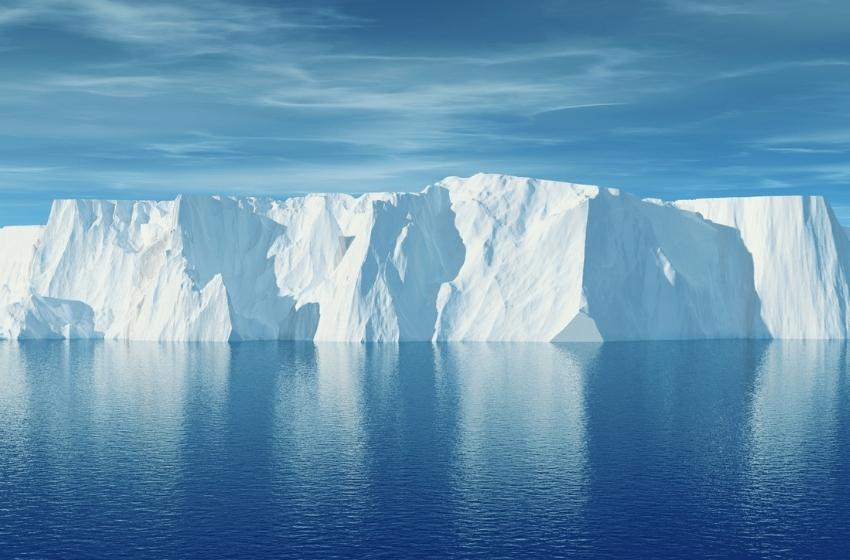Antarctica is the most remote region in the world. However, some global chemical pollutants of human origin have already reached even this area. The most dangerous are bio-accumulative and persistent pollutants, as they concentrate in the vulnerable flora and fauna of Antarctica.
Source: Ukrainian Antarctic Station “Academic Vernadskyâ€
This was the key message of the director of National Antarctic Center of Ukraine NASC Evgen Dykyi during his presentation at the international water forum “AQUA Ukraineâ€.
In 2019 and 2020, scientists of NASC jointly with EU scientists started the study of the distribution of global pollutants in the ecosystem of Southern Ocean near the Ukrainian Antarctic Station “Academic Vernadskyâ€.
Contains of the accumulated pollutants varies depending on the place of the living unit in food chain – as far as while eating its victim, the predator accumulates all pollutants from its body. Therefore, the study was conducted in the samples of marine organisms representing various trophic levels from macrophytes, sea stars, sea urchins, fish up to top predators such as crabeater seal and penguins. In total there were 14 samples taken.
The samples were screened for EU Water Framework Directive (WFD) priority pollutants and additional several thousands of chemicals of emerging concern and their transformation products by wide-scope target (ca. 2,400 substances) and suspect screening (>65,000 substances) techniques. The analyses were performed by the National and Kapodistrian University of Athens (Greece) and Environmental Institute (Slovak Republic).
This is just a start of the long-term survey, which is at present unique for Antarctica.

What kind of pollutants were found?
Mercury: toxic concentrations in most of the samples were registered. The concentrations of mercury exceeded the Environmental Quality Standard (EQS) value set for biota samples by the EU WFD in eight (out of 14) samples. The exceedance of the EQSs has been observed even in Weddell seal placenta samples (in more than 2 times), Adelie penguin eggs (up to 3 times) and in the muscles of the sea star, Gentoo penguins and crabeaters. Mercury is a naturally occurring heavy metal. Its sources include volcanoes, forest fires and burning of fossil fuels such as coal and petroleum in power plants. Levels of mercury in the environment are increasing also due to discharge from mining, pulp, and paper industries. Mercury is most probably transported to Antarctica via atmospheric mass transfer. It can build up in the bodies of marine animals in the form of methylmercury, which is highly toxic and can accumulate to humans. Other metals found at high concentrations were cadmium and lead. The highest total metals concentration was detected in macrophytes.
Novel organophosphorous flame retardants (PFR) and plasticizers were detected in the samples. The highest number (4) of PFRs was observed in the sample of Notothenia fish tissue.
Dioxins and dioxin-like compounds were present in the samples, however at low concentrations not impacting human or environmental health; sea star sample was the most contaminated one with a total number of 24 detected dioxins and dioxin-like compounds (out of 29).
The legacy flame retardants polybrominated diphenyl ethers (PBDEs) were determined in all tested samples. These are substances added to certain manufactured products in order to reduce the chances that the products will catch on fire (wire insulation; plastic cabinets for televisions, personal computers etc.). The total PBDEs concentrations exceeded the WFD EQS value in sea star and sea urchin samples
In total, 33 contaminants of emerging concern (CECs) were detected: CECs are pollutants that may cause ecological or human health impacts, and typically are not regulated under current environmental laws. Out of these were:
â— 30% Industrial chemicals. All detected compounds were determined at low median concentration levels. An exception was lauryl diethanolamide due to its presence at eggs of Gentoo Penguin. Diethanolamides are common ingredients used in cosmetics to act as a foaming agents or as emulsifier.
â— 27% Pharmaceuticals and their transformation products (TPs; pain killers such as tramadol and meptazinol, antipyretic agent used for the symptomatic treatment of acute otitis media -antipyrine);
◠15% Personal care products (parabens – chemicals that are often used as preservatives to give products a longer shelf life). They’re added to food or cosmetics to prevent the growth of mold and other harmful bacteria. Methylparaben was the most frequently detected contaminant, being present in 93% of the tested samples.
â— 15% Plant protection products and their TPs. Out of them the biggest concern is with isoprocarb, which is especially dangerous for the bees and pollinator insects;
â— 13% Stimulants and their TPs (nicotine and caffeine).
Suspect screening of 65,690 SusDat substances revealed presence of additional 56 compounds, which should be studied in detail.
In general, the contamination of the biota samples from Antarctica was lower compared to the similar screening exercises in European seas, as far as it does not have a permanent population or industry. already their reported presence in this pristine area of the world is alarming. This requires coordinated global actions to cease production or removal of the detected persistent and bio-accumulating pollutants with the eco-friendly alternatives to save the precious nature of Antarctica.





















